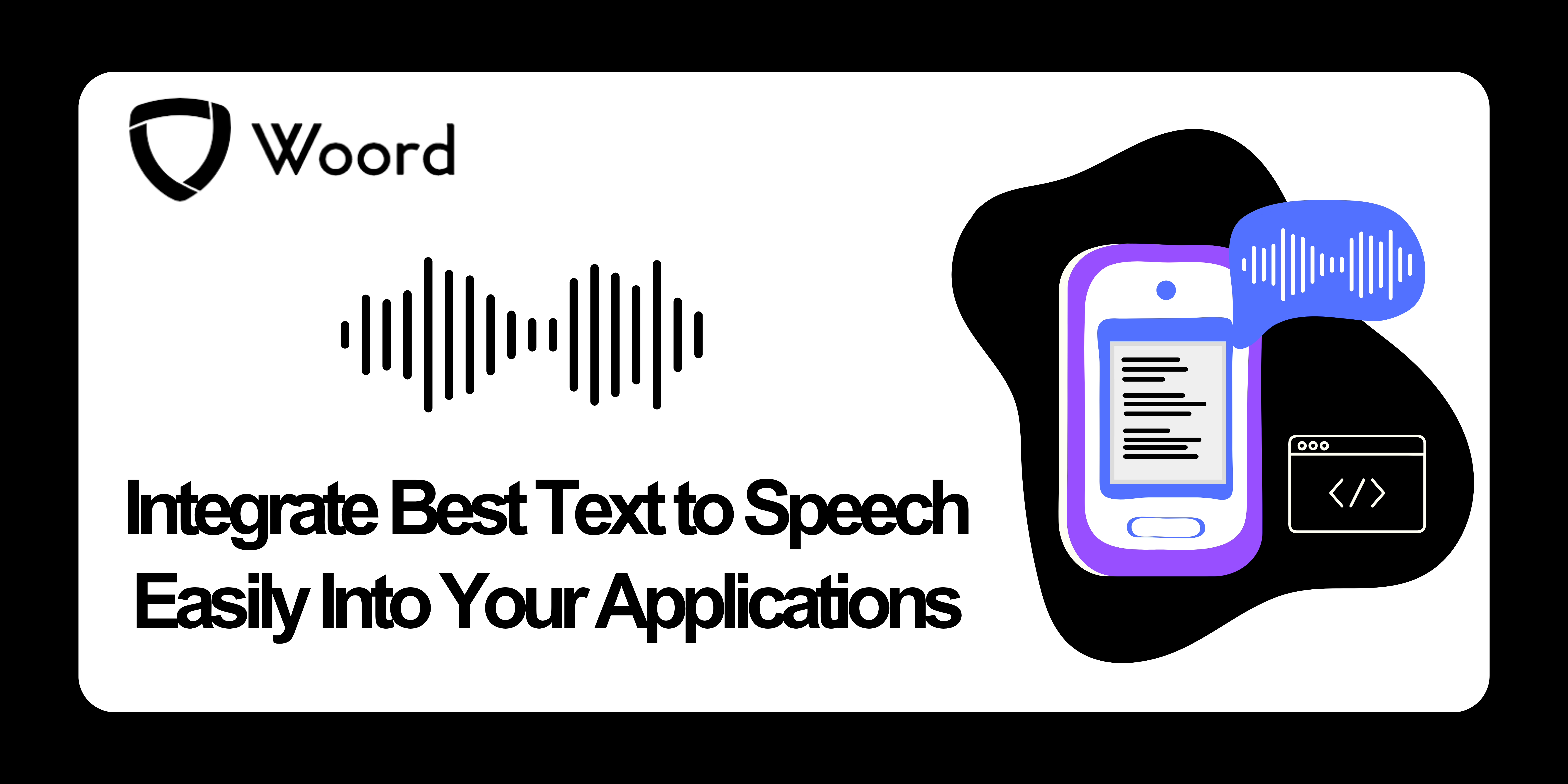Integrate Best Text to Speech Easily Into Your Applications

In today's rapidly evolving digital landscape, integrating Text to Speech (TTS) technology into applications has become more than just an added feature—it's a necessity. As businesses strive to enhance user experience and accessibility, TTS offers a dynamic solution that caters to a diverse audience. In this article, we'll delve into the significance of Text to Speech solutions, explore the process of integrating them seamlessly into your applications, and spotlight Woord, a leading TTS provider that offers unparalleled features and functionalities.
Understanding Text to Speech Solutions
Definition and Basic Functionality
Text to Speech (TTS) is a technology that converts text into spoken voice output. It's a game-changing tool that transforms written content into audible speech, making it accessible to users who may have visual impairments or prefer audio-based interactions. This technology operates through sophisticated algorithms that analyze and interpret textual data, converting it into natural-sounding speech in real-time.
Enhancing User Experience: Incorporating TTS into applications significantly enhances user experience by providing an alternative mode of interaction. Users can now listen to content instead of reading it, improving accessibility and convenience. This feature is particularly valuable for applications that deliver news, articles, or any form of written content.
Increasing Accessibility: Accessibility is a crucial aspect of application development, and TTS plays a pivotal role in making digital content accessible to everyone, including individuals with visual impairments or learning disabilities. By integrating TTS, businesses demonstrate their commitment to inclusivity and ensure that their applications are accessible to a wider audience.
Facilitating Multitasking: TTS enables users to engage with content hands-free, allowing them to multitask more effectively. This functionality is especially beneficial for applications that involve lengthy texts or instructional content, as users can listen to the information while performing other tasks.
How to Easily Integrate Text to Speech Into Your Applications
The first step in integrating TTS into your applications is to select a reliable TTS provider. Conduct thorough research to identify providers that offer robust solutions, extensive language support, and high-quality voice outputs. Once you've chosen a TTS provider, register on their platform. This will grant you access to the provider's TTS services and enable you to integrate them into your applications.
Then, you can begin integrating the TTS solutions into your application. Most providers offer comprehensive documentation to assist developers in this process. Follow the integration guidelines provided by the TTS provider to seamlessly incorporate the TTS functionality into your application.
Woord: The Comprehensive Text to Speech Solution
Woord is a leading TTS provider renowned for offering a comprehensive and user-friendly TTS solution. With Woord, developers can effortlessly integrate high-quality TTS capabilities into their applications, enhancing user experience and accessibility. Woord boasts a user-friendly interface and intuitive API documentation, making it an ideal choice for developers of all skill levels. Whether you're a novice developer or an experienced professional, Woord's straightforward integration process simplifies the task of incorporating TTS into your applications.
Also, Woord offers a wide range of voices and supports multiple languages, catering to a global audience. Developers can easily customize the voice settings and choose from various accents and languages to create a personalized and engaging user experience.
The Variety of Voices and Languages Available with Woord
Woord provides an extensive selection of high-quality voices, ranging from male to female and varying in tone and style. This diversity enables developers to tailor the voice output to suit the specific requirements and preferences of their target audience. In addition to offering diverse voice options, Woord supports multiple languages, including English, Spanish, French, and many more. This multilingual support ensures that developers can create applications that cater to a global audience, enhancing accessibility and user engagement.
Getting Started with Woord
Woord offers a comprehensive Text to Speech (TTS) solution, making it an ideal choice for developers of all skill levels. In this tutorial, we'll guide you through the process of getting started with Woord.
- Step 1: Navigate to https://www.getwoord.com/ and either paste or upload the text you want to convert. Alternatively, you can use the SSML editor to input the text manually.
- Step 2: Select your desired voice by choosing the gender and accent. You can also customize additional settings like speed and pauses to fine-tune the audio output.
- Step 3: Click 'Speak it' to generate the audio. After it's processed, listen to the audio to verify the quality. If you're satisfied with the result, download it as an MP3 file. If not, you can continue editing until it meets your expectations. To help you explore its features before making a commitment, Woord offers a 7-day free trial.
Congratulations! You've successfully used Woord's Text to Speech capabilities. With Woord's comprehensive TTS solution and extensive language support, you can now enhance user experience and accessibility by providing high-quality voice output tailored to your application's needs.
Conclusions
Text to Speech technology has revolutionized the way businesses and developers approach application development, offering a dynamic solution that enhances user experience, increases accessibility, and facilitates multitasking. Woord, with its comprehensive TTS solution and extensive language support, stands out as a leading TTS provider that caters to the diverse needs of both new and veteran developers. As Text to Speech continues to evolve and transform the digital landscape, it's evident that technologies like Woord are shaping the future of development and business, driving innovation, and paving the way for a more inclusive and accessible digital world.



